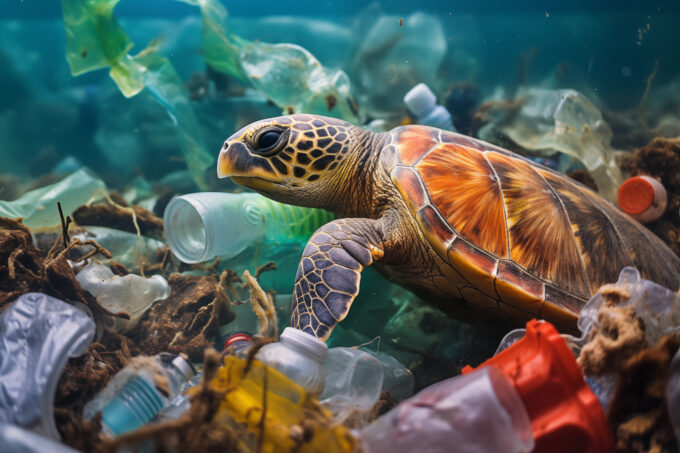
This much I know: 9 leadership lessons from global CEOs
From absorbing stress to finding your authentic voice, nine leaders of global companies share the wisdom that has helped them excel in their roles. ...

by Adrian Dellecker Published May 22, 2024 in Brain Circuits • 4 min read
Biodiversity loss is as much an existential threat as climate change, with significant impacts on the economy and business. We have already lost 69% of species in the past 50 years, and one million more are threatened with extinction. Every year, we only replace half of the forests we cut down. Over a third of our fish stocks are being over-fished. By 2050, we will have more plastic than fish in the ocean.
Ecosystem services — the services provided by nature — are essential to our economy, contributing to over half of global GDP, or $44tn every year. Consider nature’s direct contributions and what’s at stake if something happens:

Already, governments and regulators have begun to take notice and legislate. Businesses can show leadership on this emerging political agenda by:
Embedding biodiversity in climate strategies: This makes for more effective and long-lasting carbon reductions.
Focusing on a “nature-positive” strategy: It is not enough to be neutral or net zero; businesses should aspire to restore and renew biodiversity as an investment in the future.
Investing in measuring the company’s impact on biodiversity: across operations and supply chains. Expertise can be outsourced, but “nature- positive” teams should have the resources to measure baselines and progress.
Setting concrete targets: This will be an iterative process, and the earlier companies engage, the more influential they will be in shaping future standards.
Testing and learning from experimental projects: like voluntary biodiversity credits, and new monitoring technologies such as environmental DNA (eDNA), passive acoustic monitoring (ecoacoustics), and artificial intelligence (AI).

Senior Researcher and Writer at IMD
Adrian Dellecker is a political scientist, environmental advocacy expert and innovator. He previously worked as Head of Strategy and Development at the Luc Hoffmann Institute, and has driven and managed a large number of innovative projects and ventures for environmental conservation. He is passionate about helping conservation generate new revenue streams and new audiences to help reverse current trends, and build a future for his and all the world’s children to thrive on a healthy planet. Before joining the Luc Hoffmann Institute, Dellecker was Head of Policy and Advocacy in WWF International’s Global and Regional Policy Unit from 2008 to 2016.

July 10, 2025 • by Jean-François Manzoni in Brain Circuits
From absorbing stress to finding your authentic voice, nine leaders of global companies share the wisdom that has helped them excel in their roles. ...

July 8, 2025 in Brain Circuits
According to the World Health Organization, depression and anxiety cost the global economy $1tn each year, predominantly from reduced productivity. Here are six simple habits, taken from design thinker Vishakha Singh’s SHIFT...

July 4, 2025 • by Rachel Polla in Brain Circuits
How many times did I secretly wish for my father to leave the business and leave me the sole “Queen” on board? Ten years later, I cannot imagine working without him by...

July 3, 2025 • by Eric Quintane in Brain Circuits
Entrepreneurial talent who work with other teams often run into trouble with their managers. Here are ways to get the most out of your ‘boundary spanners’...
 Audio available
Audio availableThinking Fast and Slow by Daniel Kahneman

Senior Researcher and Writer at IMD
Adrian Dellecker is a political scientist, environmental advocacy expert and innovator. He previously worked as Head of Strategy and Development at the Luc Hoffmann Institute, and has driven and managed a large number of innovative projects and ventures for environmental conservation. He is passionate about helping conservation generate new revenue streams and new audiences to help reverse current trends, and build a future for his and all the world’s children to thrive on a healthy planet. Before joining the Luc Hoffmann Institute, Dellecker was Head of Policy and Advocacy in WWF International’s Global and Regional Policy Unit from 2008 to 2016.

July 10, 2025 • by Jean-François Manzoni in Brain Circuits
From absorbing stress to finding your authentic voice, nine leaders of global companies share the wisdom that has helped them excel in their roles. ...

July 8, 2025 in Brain Circuits
According to the World Health Organization, depression and anxiety cost the global economy $1tn each year, predominantly from reduced productivity. Here are six simple habits, taken from design thinker Vishakha Singh’s SHIFT...

July 4, 2025 • by Rachel Polla in Brain Circuits
How many times did I secretly wish for my father to leave the business and leave me the sole “Queen” on board? Ten years later, I cannot imagine working without him by...

July 3, 2025 • by Eric Quintane in Brain Circuits
Entrepreneurial talent who work with other teams often run into trouble with their managers. Here are ways to get the most out of your ‘boundary spanners’...
 Audio available
Audio availableExplore first person business intelligence from top minds curated for a global executive audience